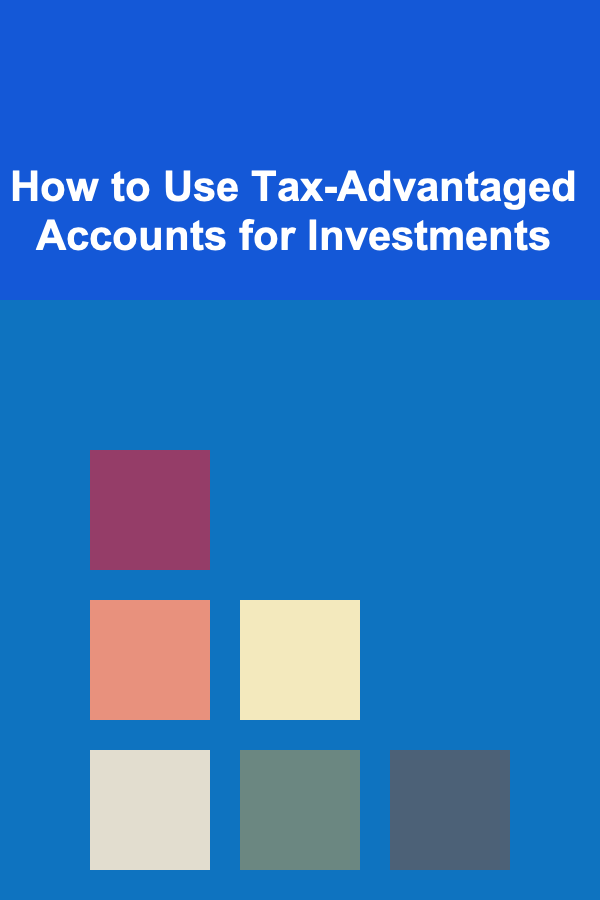
How to Plan a Web Design Project for Portfolio Websites
ebook include PDF & Audio bundle (Micro Guide)
$12.99$7.99
Limited Time Offer! Order within the next:

Creating a portfolio website is one of the most impactful ways for designers, developers, photographers, and artists to showcase their skills, talents, and creativity. A portfolio website serves as a visual resume, representing an individual or company's work and acting as a digital space to express personal or professional identity. Whether you're designing a portfolio for a client or for your own use, understanding how to plan a web design project for portfolio websites is essential to creating an effective, functional, and visually engaging site.
A well-planned portfolio website can make the difference between landing a job or project and being overlooked. It should reflect the designer's or artist's best work, showcase creativity, and provide a smooth, intuitive experience for visitors. In this article, we will dive into the key elements of planning a web design project for a portfolio website, from initial concept to post-launch.
Understanding the Purpose of a Portfolio Website
Before diving into the technical details and design decisions, it's important to clarify the primary goals of a portfolio website. A portfolio website is more than just an online gallery of work; it's a tool for personal branding, a showcase of your skills, and an essential tool for business or career growth. The purpose of this website can vary depending on the type of creative work and individual needs. However, common purposes of a portfolio site include:
- Showcasing Work: Displaying the best examples of your work that demonstrate your skills, talent, and experience. Whether you're a web designer, graphic designer, or photographer, the portfolio website should present your work in the best possible light.
- Attracting Potential Clients: A portfolio site is often the first place potential clients will visit to evaluate your expertise. It's an opportunity to turn visitors into clients by showcasing your services, pricing, and value proposition.
- Building a Personal Brand: The portfolio website can help you develop a personal brand and make a lasting impression on visitors. Your site should reflect your personality, values, and style while also demonstrating professionalism and trustworthiness.
- Enhancing Job Opportunities: For freelance professionals or job seekers, a portfolio website can serve as an interactive resume, offering potential employers insight into your qualifications and accomplishments.
Knowing the specific goal of the site will help guide the project's design decisions and the kind of content you will need to feature.
Define the Target Audience
Understanding who your target audience is will help shape the design and functionality of the website. A well-crafted portfolio site should speak directly to your audience, whether they are prospective employers, clients, collaborators, or general visitors.
Questions to consider when defining your target audience:
- Who will be viewing the portfolio website? Are they potential employers, clients, or collaborators?
- What are the specific needs of your audience? Are they looking for a particular type of work, such as user interface (UI) design or digital illustrations?
- What is the tone and level of professionalism you want to convey? Do you want to communicate your playful and creative side or highlight a more formal, business-oriented approach?
Creating Audience Personas:
Creating audience personas can be a great exercise to better understand the motivations, needs, and preferences of your target audience. By creating detailed personas, you can ensure that the website's design and content resonate with the people you want to attract.
Conduct Research and Gather Inspiration
The next step in the planning process is to conduct thorough research and gather inspiration for your portfolio website. Researching what other designers, artists, or businesses in your industry are doing will help you understand the current trends and standards, while also sparking creative ideas for your own project.
Researching Competitors and Industry Standards:
- Look for examples of well-designed portfolio websites: Browse through platforms like Behance, Dribbble, and Pinterest to discover portfolios of other professionals in your field. Take notes on what you like, what you don't like, and how the design communicates the individual's skill and personality.
- Analyze other portfolios for usability: Focus not only on the aesthetics but also on usability. Does the site have a clear navigation system? How does the layout flow? Is it easy to find contact information? Researching how well these websites perform in terms of user experience (UX) can guide your decisions.
Gathering Inspiration:
Look for inspiration from other creative fields as well. Design and functionality from different industries can be repurposed or adapted to create something unique for your own portfolio. If you're a photographer, for example, you might find inspiration from web design, art galleries, or other visual arts.
Define Key Features and Functionality
A portfolio website should have a set of core features that highlight your work while also providing a smooth and intuitive experience for the visitor. Defining these features early on will help ensure that you meet your objectives and provide a user-friendly experience.
Essential Features for a Portfolio Website:
- Homepage: This is the first impression visitors will have of your portfolio. It should offer a clear overview of who you are, your services, and your unique selling points. The homepage should grab attention and make the visitor want to explore more.
- Portfolio Gallery: The centerpiece of the portfolio website is the gallery where you showcase your best work. The layout should allow your work to shine, and you should include high-quality images or project thumbnails with clear descriptions. Grouping your work into categories or using filters for easy navigation can also help visitors find specific projects.
- About Me/Introduction Page: This page allows visitors to learn more about you. It should reflect your personality, background, and professional experience. A short bio and a professional photo can help personalize the experience and make you feel more approachable.
- Case Studies or Detailed Project Pages: For certain professions, like web design or photography, detailed case studies are crucial. Case studies allow you to walk potential clients through the process of a project, showing how you solved a problem and the results you achieved. This not only provides context to your work but also helps build credibility.
- Contact Page: Make it easy for visitors to contact you. Include an email form, your email address, and possibly links to your social media profiles. If you're a freelancer, providing an option for potential clients to book a consultation or inquiry is key.
- Blog or Insights Section (Optional): If you're a thought leader or you want to share your expertise, adding a blog or articles section can be a great way to build authority. This section can also help with SEO, as it allows you to target relevant keywords and attract organic traffic.
Wireframing and Prototyping
Once the basic features and goals have been defined, it's time to start planning the website layout and structure. Wireframing is the process of creating low-fidelity mockups to visualize the website's layout, while prototyping is about testing the usability and interaction flow of the site.
Creating Wireframes:
Wireframes help you design the basic structure of the website. They should include:
- Navigation structure
- Layout of the homepage and individual pages
- Placement of key elements, such as the portfolio gallery, contact form, and navigation menu
- Interactive elements, like buttons, hover effects, and modals
Wireframes can be drawn by hand or created using wireframing tools such as Figma, Adobe XD, or Sketch. These wireframes should focus on the website's layout, user flow, and functionality rather than on design aesthetics.
Prototyping:
Once the wireframes are finalized, you can begin creating an interactive prototype. Prototypes allow you to test how the website will function, including navigation, buttons, and transitions. Using tools like Figma or InVision, you can create a high-fidelity prototype that simulates the user experience and flows. This is an excellent opportunity to refine interactions and test the user interface.
Designing the Visual Elements
After wireframing and prototyping, it's time to dive into the visual design phase. This is where your creativity and personality come into play. The visual design of your portfolio website should reflect your unique style while also maintaining clarity, usability, and professionalism.
Designing Key Elements:
- Typography: Choose fonts that are easy to read and complement the overall aesthetic of your website. Limit yourself to two or three fonts (e.g., one for headings and another for body text) to maintain consistency.
- Color Scheme: Select a color palette that reflects your brand or personality. Make sure the colors you choose provide enough contrast to maintain readability and are cohesive throughout the website.
- Imagery and Graphics: Use high-quality images and graphics to complement your work. Custom graphics, icons, and illustrations can give the site a unique touch. Ensure the images load quickly and are optimized for the web to avoid performance issues.
- Consistency: Maintain design consistency across all pages. Use similar styles for buttons, typography, and layout structures to create a cohesive user experience.
Development and Implementation
Once the design has been approved and finalized, it's time to start the development phase. This is where the web design becomes functional.
Choosing the Right Technology Stack:
- HTML/CSS/JavaScript: For a simple portfolio website, HTML and CSS are the foundational technologies. JavaScript can be used for more interactive elements such as animations, lightboxes, or dynamic content.
- Content Management Systems (CMS): For users who prefer easier content updates, CMS platforms like WordPress or Webflow may be ideal. These platforms offer pre-designed templates that can be customized and allow for easy content management without coding.
- Responsive Design: Ensure that the website is fully responsive, meaning it should work well across all devices and screen sizes. Use media queries to adjust the layout based on the user's device.
Testing and Optimization
Before launching your portfolio website, thorough testing and optimization are crucial. You want to ensure that your site functions properly, loads quickly, and provides a seamless user experience.
Testing Checklist:
- Cross-browser testing: Test the website in different browsers (Chrome, Firefox, Safari, etc.) to ensure compatibility.
- Performance Testing: Use tools like Google PageSpeed Insights to check the website's load times and optimize images, scripts, and stylesheets for faster performance.
- User Testing: Conduct usability testing with real users to identify any navigation issues or confusing elements.
Launch and Post-Launch Activities
Once the website has been thoroughly tested, it's time to launch. After launch, it's important to monitor the website's performance, gather feedback, and continuously improve.
Post-launch Activities:
- Monitor Website Performance: Use analytics tools like Google Analytics to track visitor behavior and engagement.
- Continuous Updates: Regularly update your portfolio with new work and keep the website fresh by adding case studies, testimonials, or new blog posts.
- SEO Optimization: Make sure the website is optimized for search engines by including relevant keywords, meta tags, and high-quality content.
Conclusion
Planning a web design project for a portfolio website is a comprehensive and rewarding process. From understanding the purpose and defining your target audience to creating wireframes, refining visual elements, and launching the site, every step is important for creating a portfolio that not only showcases your work but also reflects your personal brand and expertise. By carefully planning and following these guidelines, you'll be able to create a portfolio that stands out, attracts the right clients or employers, and ultimately advances your career.
Reading More From Our Other Websites
- [Personal Care Tips 101] How to Make Your Nail Polish Remover Routine More Efficient
- [Home Renovating 101] How to Select the Perfect Tiles for Your Home Renovation
- [Tiny Home Living Tip 101] Best Portable Composting Toilets for Off‑Grid Tiny Home Dwellers
- [Screen Printing Tip 101] From Vision to Reality: Mastering the Art of Screen Printing on Glass
- [Organization Tip 101] How to Build a DIY Folding Station for Your Laundry Room
- [Home Budget Decorating 101] How to Make a DIY Headboard That's Both Stylish and Super Easy for Beginners
- [Small Business 101] How to Design a Loyalty Program That Increases Repeat Purchases for a Boutique Bakery
- [Survival Kit 101] How to Build a Survival Kit for Boaters and Kayakers Facing Sudden Weather Changes
- [Soap Making Tip 101] Step-by-Step Tallow Soap Tutorial for Beginners (No Prior Experience Needed)
- [Small Business 101] How to Create a Subscription Box Service for DIY Home‑Improvement Projects

How to Set Up a Reward System for Family Contributions
Read More
How to Start a Family Budget Without Conflict
Read More
How to Turn Deep Learning into a Steady Income Stream
Read More
How to Use Pendant Lights to Elevate Your Kitchen Design
Read More
How to Use Tax-Advantaged Accounts for Investments
Read More
How To Develop Early Art Appreciation and Creation
Read MoreOther Products

How to Set Up a Reward System for Family Contributions
Read More
How to Start a Family Budget Without Conflict
Read More
How to Turn Deep Learning into a Steady Income Stream
Read More
How to Use Pendant Lights to Elevate Your Kitchen Design
Read More
How to Use Tax-Advantaged Accounts for Investments
Read More